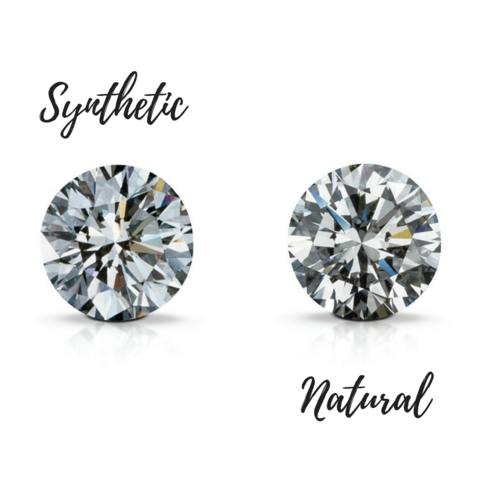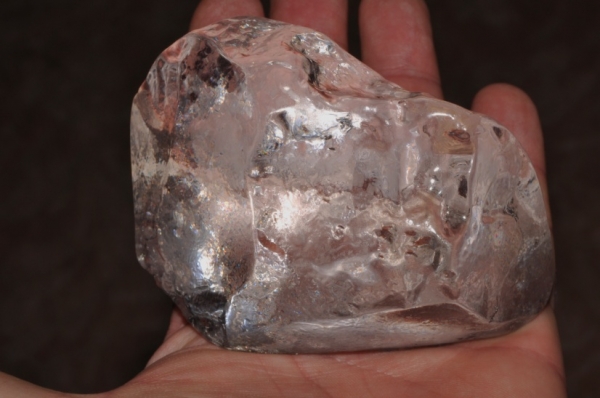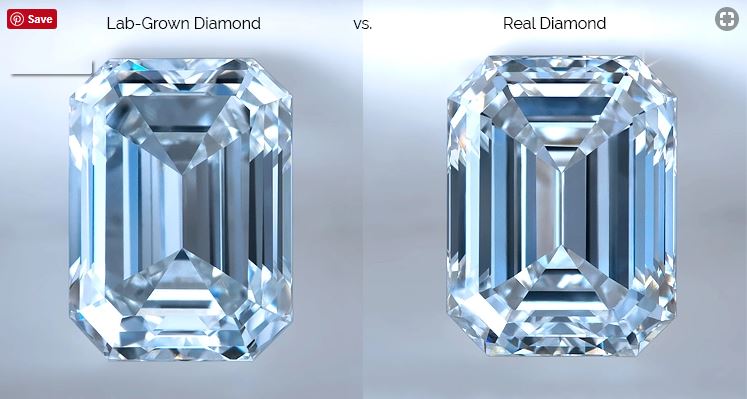

Diamonds Diamonds Diamonds
Welcome to April and to Celebrate spring and the birthstone of April, the Diamond, we are going to investigate and compare natural diamonds, Lab-grown diamonds and diamond gemstones.
NATURAL DIAMONDS: Natural Diamonds were formed millions of years ago under enormous heat and pressure at depths of around 100 miles below the earths surface. At some point after crystallization the rough diamond crystals were forced closer to the earths surface by volcanic eruptions, creating narrow vertical rock formations known as kimberlite pipes. By mining and processing the kimberlite ore, rough diamond crystals are identified and separated. The ratio of rough diamonds to kimberlite is extremely low and it is not unusual for miners to process approximately 2 tons of ore before a single rough diamond is found large enough to produce a polished diamond weighing +-1.00 carat. Not all organic diamonds are created equal though. There are differences in size, color and clarity which are caused by trace minerals and other conditions that influence a diamond as it grows. For example, the vivid yellow hue in fancy yellow diamonds is caused by trace amounts of nitrogen mixed within the carbon structure.
DID YOU KNOW? *Diamonds were used to engrave gemstones in India by 300BCE * Diamonds weight is measured in carats. The word carat is derived from keratin, the Greek name for the carob tree whose seed was used for centuries as the standard of weighing precious stones. Because the seed could vary slightly in weight, in 1913, carat weight became metric: one metric carat is equivalent to 0.2 grams or 0.007 ounces. *Around 30% of the diamonds mined worldwide are gem quality. *Even though the U.S. produces almost no diamonds for commercial consumption, America buys more than 40% of the wrlds gem quality diamonds - making it the largest diamond market.
LAB-GROWN DIAMONDS: As you research diamonds, you may have seen information about lab-grown diamonds versus naturally formed diamonds as "fake diamonds", imitations or simulates. THIS IS INCORRECT. Most lab-grown diamonds are chemically and physically the same as a natural diamond produced by geological processes of Mother Nature. Lab created diamonds are grown in highly-controlled laboratory conditions that reproduce the eath's natural growing environment: high pressure and high temperature (as was stated above). These man-mad diamonds have essentially the same chemical composition, crystal structure,optical and physical properties of diamonds found in nature. They aren't technically"synthetic diamonds" since their chemical composition is that of naturally occurring diamonds; and they usually exhibit the same fire, tintillation and sparkle as organic diamonds.
DO LAB GROWN DIAMONDS HAVE FLAWS? Just like no two couples are alike, no two diamonds are alike. This is true for both lab-grown diamonds and organic diamonds. When considering the differences and similarities between the two you won't find many flaws that are visible to the unaided eye, unless you're a gemologist. Nearly all diamonds, organic and lab-created alike, have inclusions that affect their clarity. Lab-grown diamonds are grown in a molten metal solution and as a result they have metallic inclusions which can usually be itdentified with 10x magnigication (not visible to the unaided eye). Metallic inclusions do not occur in diamonds that come from the ground. Organic diamonds, formed deep inside the earth, have inclusions like feathers,crystals, pinpoints and clouds that are caused by allkinds of elements and violent volcaic eruptions as they rise to the suface; only the rarest diamonds emoerge in perfect condition with no flaws.
COLORS LAB-GROWN VS ORGANIC DIAMONDS Lab-grown diamonds are grown in white, yellow, blue, pink and green and are typically found with color grades ranging from K to D grades. Certain types of Lab-created diamonds are color treated. Many though not all, CVD-grown diamonds come out a sort of brown color and then are de-colorized through a treatment process to make them colorless or near colorless. Organic diamonds occur in every inamginable color with an infinite number of hues, tones and saturation levels. Color comes from impurities (such as nitrogen molecules) that become trapped inside the diamond lattice as it grows. Different types of trace chemicals in the pure carbon cause different colors and saturation levels
GROWING TIME Lab-createddiamonds take approximately 6 to 10 weeks to develop in a laboratory. Natural-grown diamonds mined today were formed in nature millions to billions of years ago. This alone is one reason why they're so valuable. Whcomparing lab-grown versus nature -grown its fascinating to consider differences in time spent "growing" diamonds. Part of what makes diamonds alluring to people is their history.
COST Many retailers clain that lab diamonds cost abut 30% less than natural diamonds of compatible size and quality. sometimes however, inventories of lab-created diamonds are often limited compared to organic diamond inventories making you choice of the perfect diamond more limited. Considering that alot more work and natural resources go into delivering that organic diamond to your doorstep than the lab-created one, its not all that surprising.
ONE OF THE MOST IMPORTANT DIFFERENTIATORS BETWEE A LAB-GROWN AND ORGANIC DIAMOND: LAB-GROWN DIAMONDS HAVE NO RESALE VALUE. ORGANIC DIAMONDS TYPICALLY RETAIN VALUE AND CAN BE SOLD YEARS LATER.

COMING UP IN OUR NEXT BLOG: LETS TAKE A LOOK AT DIAMOND ALTERNATIVES
